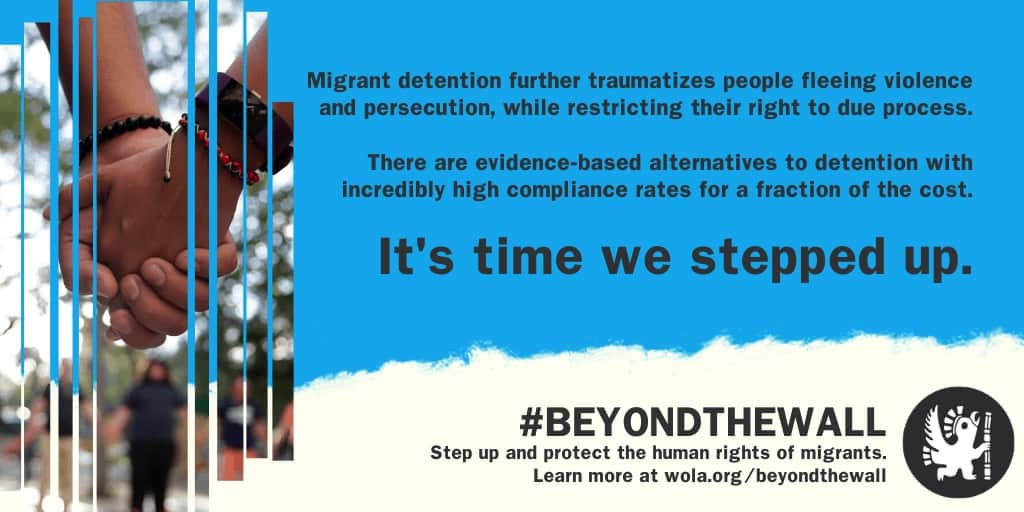For the full article, please click here.
During the presidential campaign, the Biden campaign indicated that it would do the following:
- End the “Remain in Mexico” program (also known as the “Migration Protection Protocols,” or MPP)
- Withdraw from the “safe third country” agreements signed with the governments of Guatemala, El Salvador, and Honduras, under which asylum seekers are deported back to these countries
- End “metering,” a practice in which Customs and Border Protection (CBP) limits the number of undocumented people who can present themselves at the 48 ports of entry and petition for protection.
- Review the Centers for Disease Control and Prevention (CDC) “expulsions” order which, in its current form, violates the principle of non-refoulment (the international laws and norms that forbid countries from returning asylum seekers back to situations of danger).
- Reinstate the Deferred Action for Childhood Arrivals (DACA) program
- Stop all border wall construction
- Reinstate the Obama administration’s Central American Minors program, which allows parents from El Salvador, Honduras, or Guatemala to apply for U.S. refugee status for their children.
- Freeze deportations for 100 days while reviewing criteria for ICE arrests.
- The new administration will also likely preserve the Temporary Protected Status (TPS) humanitarian program past its current expiration in October 2021.

The obstacles to reversing Trump’s deterrence-first approach
The first is that the Trump administration has left Biden’s incoming administration with almost no infrastructure at the border to receive asylum seekers in an orderly way. Ports of entry are understaffed and unequipped for a new reality in which asylum seekers arrive at the border in large numbers.
COVID-19 adds to this challenge. The pandemic is severely testing asylum and refugee protections worldwide; in many countries, the systems for taking in asylum seekers are still only partially operational.
An expected wave of migration throughout South and Central America may complicate things further. We may already be seeing the beginning of this surge in migration, given recent Customs and Border Protection (CBP) data. October 2020 saw the largest number of people apprehended at the border since July 2019—the greatest number of apprehensions for the month of October since 2005.

The short term
- Improve processing capacity at the U.S.-Mexico border by establishing temporary facilities near ports of entry along the U.S.-Mexico border
- Ensure the temporary processing facilities are staffed appropriately. Specifically, the processing of asylum seekers and migrants at the U.S.-Mexico border must adjust to the realities of COVID-19. That means investing in alternatives to detention
The medium term
- Improve immigration court capacity in the United States by coordinating actions regarding the drawdown of programs like “Remain in Mexico.”
- Emphasize the importance of Mexico’s justice system investigating and punishing crimes against migrants and collaborate in investigations involving transnational crimes against migrants.
- Support the Mexican government’s efforts to increase internal control mechanisms over their immigration agents and security forces that interact with migrants.
- Expand seasonal and/or temporary work visas for Central Americans
The long term
- Work with Central America’s reformers to make the region a place where people aren’t forced to flee
- Condition aid on demonstrable progress on advancing reforms and strengthening institutions.
- Restore critical aid to programs that have a successful track record of directly addressing the drivers of migration, including violence and poverty.
- Focus security-related funding on strengthening civilian law enforcement and justice institutions and making them more accountable and transparent.

These short, medium and long-term proposals aren’t that heavy a lift, if the U.S. government fully commits to them. Compared to the more than $11 billion that went into Trump’s border wall, the short-term measures are far less costly.
The Biden administration can fully dismantle Trump’s cruel and inhumane migration policies, with a credible, well-resourced, and coordinated plan across all three timeframes. It will not happen overnight, but with commitment, vigilance, guidance, and expertise, U.S. civil society and concerned members of Congress can ensure that the Biden White House takes the first critical steps.
Adam Isacson has worked on defense, security, and peacebuilding in Latin America since 1994. He now directs WOLA’s Defense Oversight program, which monitors U.S. cooperation with Latin America’s security forces, as well as other security trends. This is the second article of a two-part series published on WOLA. Posted with permission from Mr. Isacson.
